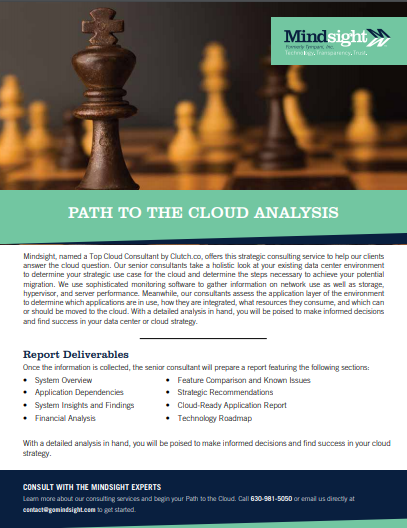June 1, 2022 by Siobhan Climer and Kim Morgan
This article was originally published in June of 2019
First, definitions.
Multicloud is not the same as hybrid cloud, or hybrid IT, though these two terms are often conflated.
Hybrid cloud is the concurrent use of both on-premise infrastructure, typically private clouds, with public clouds. If you want to be super fancy, you can talk about the pragmatic hybrid cloud – a term coined by David Linthicum, chief cloud strategy officer with Deloitte. This denotes the pairing of traditional on-premise systems with public clouds.
Multicloud isn’t technically either of these groupings. Multicloud refers to the use of multiple different public cloud providers.
We won’t dive into each iterative combination – for example, you can have a multicloud environment that also utilizes a private cloud – because the big takeaway is that multicloud use is on the rise.
Synergy Research Group’s recent compilation of market share information shows that while Amazon Web Services (AWS) has remained the clear leader among public cloud providers, most of the other big cloud players are gaining ground. As of the fourth quarter in 2021, Amazon holds 33% of the market share of public cloud usage, which is more than the next two providers (Microsoft and Google) combined.
As of January 2022, an estimated 94 percent of organizations already operate multicloud environments. This is partly due to the COVID-19 pandemic which accelerated the pace of transformation, with enterprises having to adopt cloud and digital technologies overnight to enable remote work and minimize business disruption.

Why Use Multiple Public Cloud Providers?
It sounds complex, but businesses are moving to multicloud for a reason. Multicloud environments offer a lot of benefits not afforded when using a single public cloud provider. No one wants to have all their eggs in one basket.
According to a 2022 Flexera survey, 89 percent of respondents reported having a multicloud strategy.
The primary motivator is risk mitigation. It is risky to rely exclusively on one provider for a multitude of reasons, and organizations that are able to utilize multiple servicers lessen the impact if one of those providers fails.
In the past, businesses used their networks to connect sites and data centers together, now, businesses rely on networks to connect users, applications, and even things together. Pre-COVID, most businesses didn’t really worry about remote workers, or supporting applications outside the protection of their own local firewalls.
“The challenge is building a secure network to support all of these interactions,” said Atif Khan, co-founder and CTO, Alkira.
“Such a network does not only connect to the edge of the cloud, but also exists inside the cloud. Many companies struggle with just a single cloud, so although using a multicloud approach is desired/required in many ways, implementing it and maintaining a high level of security is much easier said than done.”
5 Big Benefits Of Multicloud
Avoiding Vendor Lock-In – One of the primary motivators for multicloud deployments is the fear the business will be forever tied to a single provider. What happens if the company grows too big for the provider, or the company needs features not offered in that provider. If anything changes and the single provider is no longer a best-fit, the process of moving to another provider could be extremely time-consuming and expensive.
Optimizing Performance – The reality is that the organization’s workloads, VMs, servers, databases, and applications may perform differently in different public cloud environments. By optimizing the multicloud environment so that each of these are optimized, businesses will have better performance overall.
Improving Reliability – When a public cloud provider goes down, especially one of the big players, it has a rippling affect around the world. By utilizing a multicloud environment, organizations are essentially diversifying their portfolio, ensuring that if – and when – one public cloud provider is unavailable, the entire business does not go down with it.
Cost Optimization – Not all cloud providers are created equal. For most businesses, budgets matter. Finding ways to support the organization’s strategic initiatives means making choices. A multicloud deployment could be one creative way to optimize costs around cloud technology and workload reliability.
Flexibility – Different data has different needs. Some is critical to the business and needs to reside under layers and layers of security. Other data may be vital in day-to-day functionality, where availability is key. At the same time, the business itself is always changing. The needs of tomorrow may be quite different than those of the present moment. Multicloud deployments allow organizations to grow, shift, and remain agile. Key in a world where everything is always changing.
Like what you read?
Contact us today to discuss cloud strategies and roadmaps.
About Mindsight
Mindsight, a Chicago IT services provider, is an extension of your team. Our culture is built on transparency and trust, and our team is made up of extraordinary people – the kinds of people you would hire. We have one of the largest expert-level engineering teams delivering the full spectrum of IT services and solutions, from cloud to infrastructure, collaboration to contact center. Our highly-certified engineers and process-oriented excellence have certainly been key to our success. But what really sets us apart is our straightforward and honest approach to every conversation, whether it is for an emerging business or global enterprise. Our customers rely on our thought leadership, responsiveness, and dedication to solving their toughest technology challenges.
Contact us at GoMindsight.com.
About The Authors
Siobhan Climer, Science and Technology Writer for Mindsight, writes about technology trends in education, healthcare, and business. She previously taught STEM programs in elementary classrooms and museums, and writes extensively about cybersecurity, disaster recovery, cloud services, backups, data storage, network infrastructure, and the contact center. When she’s not writing tech, she’s writing fantasy, gardening, and exploring the world with her twin daughters.
Kim Morgan is part of the Marketing Department at Mindsight. Since 2007, she has devoted her career to using digital media to educate and effectively communicate a variety of topics at all levels of expertise. Kim’s favorite part about Mindsight is how team members are encouraged to always be curious, and continue developing not only professionally, but also personally. When not working, she can be found coaching youth lacrosse or toting her 4 kids around in her sweet sweet minivan while rocking out to hits from the late 90’s and early 2000’s.
Meet Mindsight: Nick Stover, Solutions Architect and Datacenter Practice Lead



